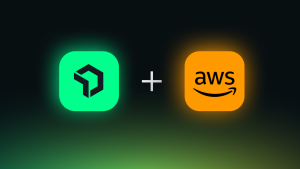In Escaping the Alert Vortex with AIOps, Jason English, a Principal Analyst at Intellyx, tells us that challenges like hybrid IT complexity, hyper-accelerated delivery, and automation have created event and alert storms from which it can be difficult to escape. The rise of AIOps platforms, while far from fully omniscient, is giving SREs, Ops practitioners, and developers the tools they need to weather and prevent these storms.
“These tools are all about data,” writes David Lithicum, in GigaOm’s report Key Criteria for AIOps. As they monitor systems, they use that data to expose issues, Lithicum says. And “they analyze historical data to determine trends that may portend a failure or other potential issue. The lifeblood of any AI system is the data needed to train the AI model.”
So, how does AIOps work? How do machine learning and artificial—or applied— intelligence utilize data to help busy SREs and DevOps teams optimize troubleshooting and issue resolution? It may seem like science fiction, but it’s definitely not.
Here are some basic definitions.
What is AI?
Artificial intelligence (AI) is an umbrella term for technologies that involve the simulation of human intelligence by machines—but it’s not as scary as it sounds. AI technology enables software to learn, react, evolve, recognize, and automate.
What is ML?
Machine learning (ML) algorithms are trained on data sets. They can then adjust themselves automatically through experience and “learn” to improve outcomes. ML algorithms can often find unknown unknowns, patterns, and connections in data that humans would never have uncovered. In AIOps, machine learning enhances incident response, for example. Machine learning is considered a subset of artificial intelligence.
How does AIOps work?
To understand how AIOps works, let’s take a look at an example. It's likely familiar to most development teams.
In today’s extremely complex systems, unknown unknowns and alert noise are significant issues. Developers and engineers are inundated with alert after alert. They don’t always have the capacity (or mental energy) to examine and follow every alert. Alert fatigue is common, which means critical alerts are often buried and ignored.
Relying on that one person who has worked in the company for 20-plus years to differentiate the harmless quirks from the high-priority alerts isn’t a long-term solution. But AIOps might be.
AIOps is a new category of tools that bring AI and machine learning benefits to telemetry data. The goal is to help teams evaluate and act on their data more quickly and reduce manual toil.
In short, AIOps works by providing intelligence and enrichment to data. It doesn’t replace the role of the developer. Instead, it delivers time-saving assistance that enables greater observability. Ultimately, it leads to a more perfect finished product.
The difference between AIOps and other monitoring tools
AIOps empowers DevOps and Site Reliability Engineering teams with enriched insights and automation so they can find and resolve problems faster.
The element of intelligence is what sets AIOps platforms apart. And it’s this critical ingredient that gives AIOps its value within the modern-day workplace.
Most organizations have seen the complexity of their production systems increase. Further, software now plays a more vital role than ever in unlocking growth opportunities, enhancing customer experience, and securing an advantage over competitors. Developers are under significant pressure to deploy error-free software in record time and resolve future incidents fast.
Machine learning and AI give on-call teams the support they need to identify, prioritize, troubleshoot, and remedy issues in a fast-paced environment. AIOps platforms augment the way existing incident management teams and workflows operate, reducing mean time to resolution (MTTR) and manual toil. This feature results in a better experience for employees and end users alike.
AIOps in practice
The value of AIOps extends beyond noise reduction. Here three ways AIOps tools use AI, ML, and automation to enhance the incident response process:
- Proactive anomaly detection: AIOps tools help you find unknown unknowns by automatically detecting anomalies in your environment and triggering notifications to your monitoring solution and other tools where your teams collaborate, such as Slack.
- Event correlation and enrichment: AIOps tools navigate teams to root cause faster by helping prioritize and focus on the issues that matter most by correlating related alerts, events, and incidents, and enriching them with context from historical data or other tools in your stack. The most advanced tools use both machine-generated (i.e., time-based clustering, similarity algorithms, and other ML models) and human-generated decisions to power the correlation logic, and give you the ability to enable automatic flapping detection and suppress noisy or low-priority alerts.
- Intelligent alerting and escalation: AIOps tools can save valuable time by automatically routing incident data to the individuals or teams best equipped to respond to them. Particularly for decentralized, distributed teams that have embraced self-service, decreasing the number of noisy alerts sent to the wrong people and cutting the time it takes to route critical incident data to the right folks reduces toil.
AIOps tools run ML models to evaluate data from your incident management and monitoring tools and suggest an individual or a team that can resolve a particular problem faster, because either they’ve already seen something similar in the past or are experts at the specific components that are failing.
Embracing AIOps
[embed]https://www.youtube.com/watch?v=iaOr55JZ5Rk&t=40s[/embed]
Embracing AIOps frees SREs and DevOps helps teams get closer to the root cause and resolve issues faster, alleviating the burden of alert fatigue, and empowering teams to do what they do best: think creatively and strategically.
To find out more about our AIOps capabilities and get started with New Relic Applied Intelligence, sign up for a free account and get 100 million Proactive Detection app transactions and 1,000 Incident Intelligence events free every month.
The views expressed on this blog are those of the author and do not necessarily reflect the views of New Relic. Any solutions offered by the author are environment-specific and not part of the commercial solutions or support offered by New Relic. Please join us exclusively at the Explorers Hub (discuss.newrelic.com) for questions and support related to this blog post. This blog may contain links to content on third-party sites. By providing such links, New Relic does not adopt, guarantee, approve or endorse the information, views or products available on such sites.




